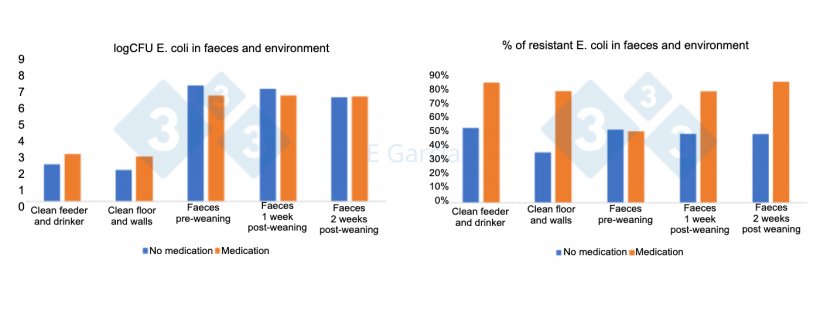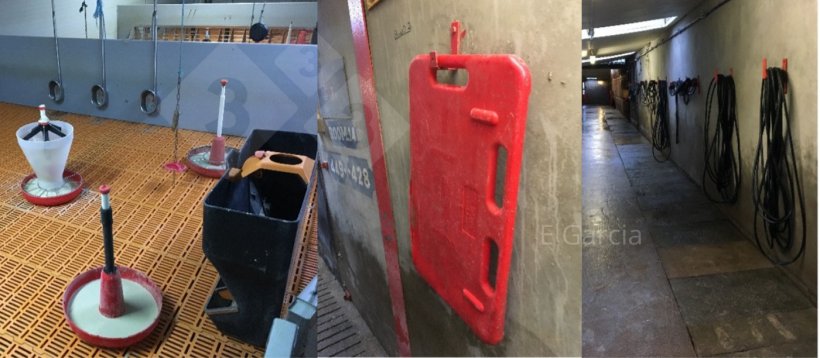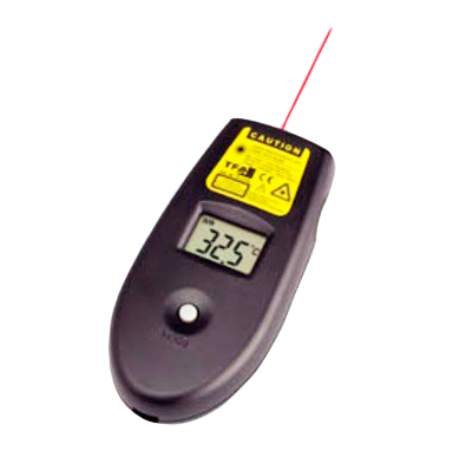Is cleaning that important?
This is often a subject of debate. How clean should the nursery be before piglets enter the room? We have compared cleaning between farms using or not using in-feed medication and the results were quite surprising. The loads of E. coli in the rooms and in the feeders and drinkers of farms using in-feed medication were not that different from those not using it. However, those using medication did have clearly higher levels of antibiotic resistance and this resistance was often to the antibiotics that they were using.


Thus, do we need to aim for 0 bacteria when cleaning?. Probably not, probably it is more about building the right microbial ecosystem in the farm. Just as the microbiota is often referred to as an organ in our body, maybe microbiota should be considered as a part in your facility. Once we remove in-feed medication we are modifying the microbial populations in the farm and reaching a new balance will take a while. A very thorough cleaning and disinfection can open the door to anything that comes with the piglets and then antibiotics may be the only way to control it. Probiotics used in the environment may be an important option for the future. And remember, you are using water for all this, so keep an eye on the quality of your water.
Environmental control
This is an important point. And we would like to insist. This is an important point. Most farmers not using in-feed medication show high attention to detail when it comes to checking temperatures, adjusting ventilation, etc. Do not trust the equipment to do all the work. Monitor the temperature throughout the day and in different areas of the room. Dedicate time to know your facilities and see how animals behave, they may show you the issues in your facilities. Buy a thermographic gun and take a look at your rooms. It will pay off.
For those production systems that include site 1 and 2 in different locations, this is of special importance. Even if the trucks have good environmental control, the piglets will suffer and the conditions that they find in the nursery are key for a proper recover. It is literally as stressing as birth, so we should take the same care of the piglets.

Review your definition of all-in-all-out
Yes, we know, everybody knows what all-in-all-out means. But let’s take another look at it. All-in-all-out means that you:
- remove all the pigs from a room as a full batch
- clean and disinfect the room and allow for proper drying
- bring the following batch in.
And that is all. All-in-all-out does not include a step where you “bring the small piglets from the previous batch into that room”. If you are doing this, you are better off not cleaning. We have told the farm staff so many times that cleaning is essential that they (and often we) forgot that the main carrier of diseases is the pig, not the room.
The elephant in the room
Whether we like it or not, there is 2 areas that we all know we need to discuss, weaning age and space allowance. We are following the legal requirements. However, it makes a huge difference if you can give piglets a bit of extra space in the farrowing/nursery rooms and if you can give those piglets 3-4 extra days with the sow. Economically it might not make sense when you read this, but if you try it, you may think otherwise. Forget about what happens in the nursery and focus on the time and cost to bring those pigs to slaughter weight. You may easily save a week of finisher time.
Take home (or farm) message
In summary, there is no silver bullet to get rid of in-feed antimicrobials and ZnO. We must face the truth. It is going to be hard, expensive, and will take time, and good doses of teamwork. Talk to other farmers, share your experiences, work with your veterinarian/nutritionist/advisor and force them to look for the best information. Biosecurity, hygiene, environmental control, vaccination, space… all of them are important and we cannot tell you which one is the most important in your farm. What we can tell you for sure is that 3 years from now you will be asking yourself, how did we not get rid of the antimicrobials earlier?











